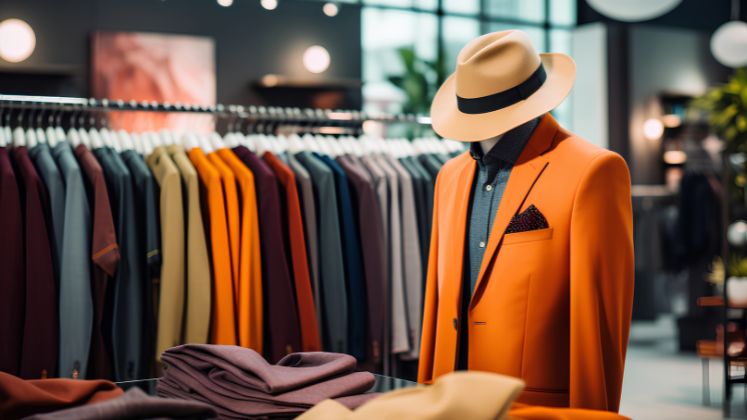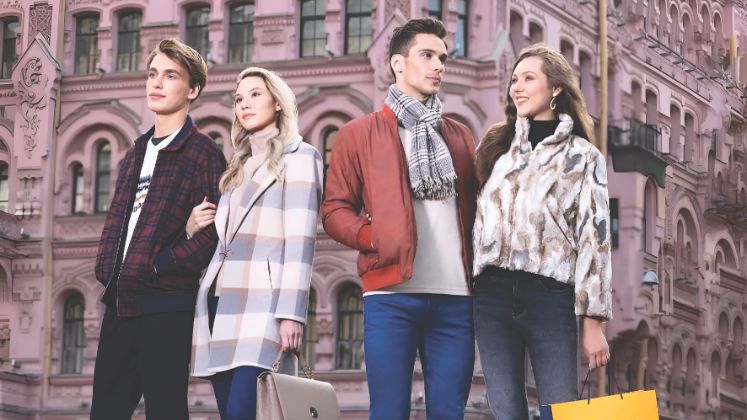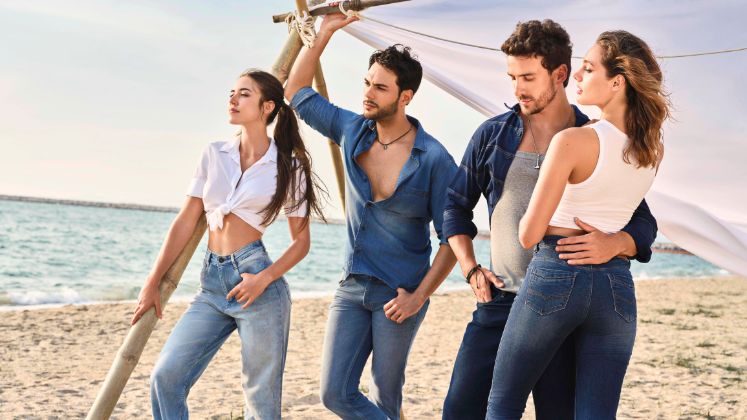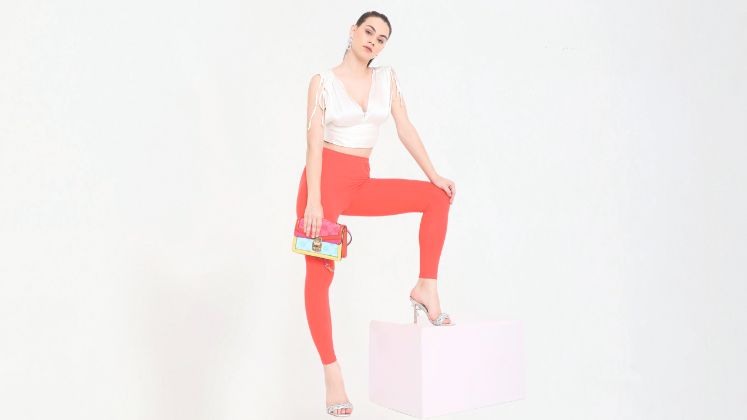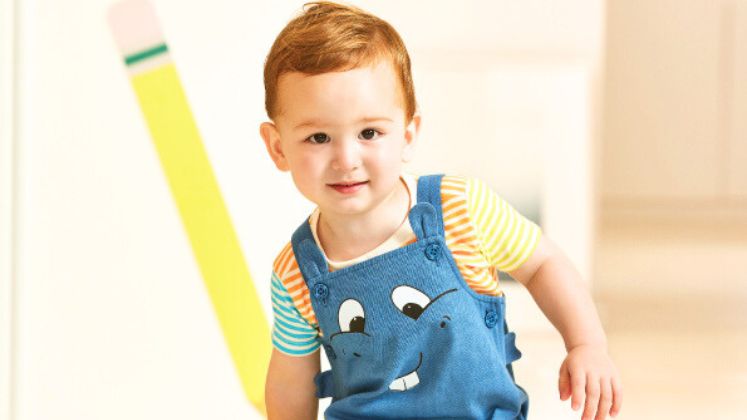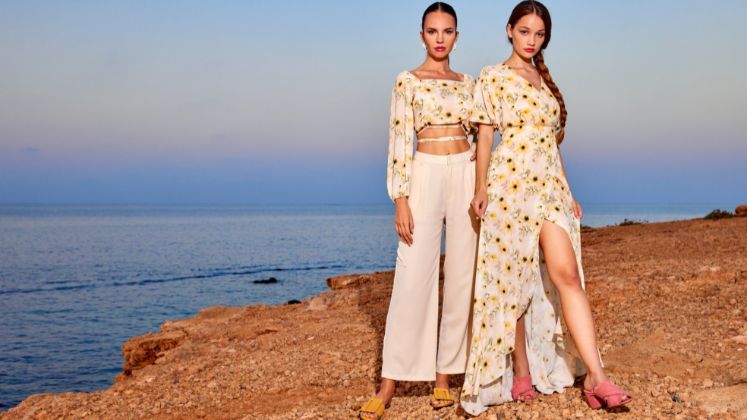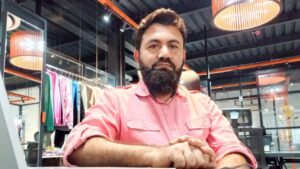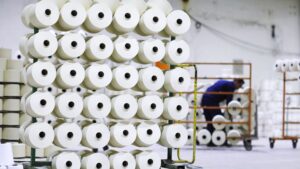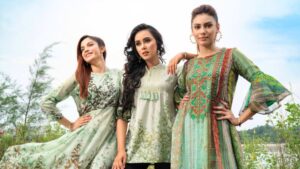The organised retail industry in Bangladesh, though still in its early stages, is growing steadily. Many strategies are being used by domestic players to drive growth despite the tough environment. In this context, it could be helpful to take inspiration from successful brands across the border. While the conditions and economic environment are quite different, their strategies could provide valuable insights for fine-tuning approaches locally. Also, many Indian brands are growing rapidly and some of them are open to sourcing from Bangladesh. Currently, Indian brands and retailers source around US $ 800 million worth of apparel from Bangladesh and this figure is expected to surpass US $ 1 billion soon. For manufacturers, it’s important to understand the USPs of potential clients to build stronger partnerships and better meet their needs. Although the current political situation is making some brands cautious about sourcing from Bangladesh, many still recognise the value Bangladesh offers. For example, Madame, a women’s fashion brand, sources about 35 per cent of its winterwear and 15 per cent of its summerwear from Bangladesh. However, the brand is concerned about timely deliveries. Akhil Duggar Jain, Executive Director, shared with Apparel Resources, “We want to continue sourcing from Bangladesh, but due to some challenges, we are
| Barcelona is exploring sourcing options in Bangladesh. The brand is looking for RMG manufacturers who can handle smaller orders and focus on product development. It plans to source half of its denim products from Bangladesh and gradually increase this share. |
being careful.” VIP Clothing is not currently sourcing from Bangladesh but is open to it if they find vendors who meet their quality and pricing standards. Kapil Pathare, Director of the company, said, “If we find the right vendors, we could source men’s undergarments and panties from Bangladesh.” Barcelona is also exploring sourcing options in Bangladesh. The brand is looking for RMG manufacturers who can handle smaller orders and focus on product development. It plans to source half of its denim products from Bangladesh and gradually increase this share. Knitted garments are another area where the brand has found cost-effective options in the country. Barcelona prides itself on quick payments—within three days of delivery—and transparency with its vendors. Founder Jaimin Gupta believes the brand will build long-term relationships with vendors in Bangladesh, just as it has in India.
In our exploration of successful strategies adopted by fashion brands, we’ve handpicked eight Indian brands, each boasting over 50 stores and a diverse portfolio catering to various customer segments or demographics. Fashion brands employ a variety of successful strategies to enhance their market presence and drive growth. These approaches span a broad spectrum, from offering diverse product lines and engaging in collaborations with Bollywood movies, as exemplified by Monte Carlo, to Cantabil’s strategic consideration of store locations. Moreover, brands like Killer Jeans, despite operating under the FOCO model, maintain a meticulous oversight of their store operations. Whereas, VIP Clothing and MiniKlub leverage their in-house manufacturing capabilities to effectively manage quality and expenses. Meanwhile, Madame stands out in its agility in translating trends into commercial products and swiftly getting them onto retail shelves. Furthermore, celebrity brands like Being Human capitalise on their association with well-known personalities and social causes to justify premium pricing for their products.
01
Monte Carlo
A well-known brand in India, Monte Carlo is known for its winterwear collection, whether it’s a cozy jacket, sweater or cardigan. In FY ’23, Monte Carlo witnessed a 22 per cent increase in business compared to FY ’22, resulting in a turnover of approximately Rs. 1,100 crore (US $ 129 million). A significant aspect of Monte Carlo’s success lies in its business model. A whopping 90 per cent of its 356 stores operate on the franchise-owned-franchise-operated (FOFO) model, allowing the company to avoid major capital expenditures. The remaining 10 per cent are company-owned-company-operated stores, with each showroom costing approximately US $ 46,940, as per reports. Beyond bricks-and-mortar, the brand has embraced the digital landscape, selling through its website and prominent e-commerce platforms like Ajio, Flipkart, Amazon, Myntra, amongst others. Monte Carlo also stands out from its competitors due to its extensive collections, surpassing those offered by other brands. “We offer an extensive selection, crafting around five to 600 designs in our overall collection and 150 to 175 designs specifically in jackets alone. This breadth of choice surpasses the typical range offered by other brands, which usually offer around 35 to 50 designs. With top-of-the-line machinery in-house each year, we introduce new designs to stay competitive in the market. We are present in woollens, jackets, sweatshirts, tracksuits, shawls, T-shirts, shirts, trousers, denims, ladies tops, kidswear, athleisurewear and accessories. Increased focus on the Summerwear category from the last few years is also yielding results,” stated Sandeep Jain, Executive Director, Monte Carlo Fashions Ltd. Another notable aspect of Monte Carlo is its commitment to competitive pricing. Sandeep highlighted, “For instance, our Kashmiri sweaters are priced at Rs. 16,000 (US $ 188), significantly lower than Rs. 40,000 (US $ 470) charged by foreign counterparts. Similarly, our jackets are priced at around Rs. 6,000 (US $ 70.48) to Rs. 6,500 (US $ 76.36), which compares favourably with
Rs. 7500 (US $ 88) – Rs. 8000 (US $ 94) charged by other brands.” Furthermore, the brand maintains a healthy EBITDA margin of 20 per cent.
Selling 10 million pieces annually and sourcing an impressive 95 per cent of its products from India, the brand also strategically partners with Bollywood films to boost consumer recognition and brand presence. Monte Carlo has served as the official clothing partner for blockbuster Bollywood movies such as Barfi, Mary Kom, Bhaag Milka Bhaag and Student of the Year.
02
Cantabil
Retail fashion and apparel brand Cantabil last year reached its 500th store milestone by opening a store at Ayodhya, Uttar Pradesh. The company experienced a 43.96 percent growth in its FY ’23 revenue, totalling Rs. 551.72 crore (US $ 64.81 million) compared to Rs. 383.23 crore (US $ 45.01 million) in the previous year. Additionally, its profit after tax (PAT) increased by 76.66 per cent to Rs 67.24 crore (US $ 7.89 million), with an EBITDA margin of 30 per cent. Cantabil anticipates 15 per cent growth in the current year. The brand places a strong emphasis on retail experience and is present in 280 cities. It’s extensive reach, including in Tier-3 locations and beyond, has effectively catered to the desires of consumers seeking high-quality products at affordable prices. Cantabil serves as a prime example of companies expanding to Tier-3 cities and beyond, where costs are lower and demand is greater. When selecting store locations, Cantabil prefers opening in areas that are less congested and provide ample parking space. “For instance, consider Chandni Chowk—parking can be challenging there. Similarly, in Tier-3 towns, conventional markets face issues like parking and congestion. However, newer markets on the town’s outskirts are emerging, offering better accessibility and parking options for customers. They also offer larger storage spaces, providing more opportunities. The availability of bigger facades in these locations enhances the customer experience, which is not achievable in the older markets,” explained Deepak Bansal, Whole-Time Director, Cantabil Retail India Ltd. Each Cantabil store opening necessitates a capital expenditure (CAPEX) of approximately Rs. 45-50 lakh. Around 70 per cent of its stores are company-owned and the remaining 30 per cent of stores are run by franchise partners. The brand believes that operating company-owned stores gives it greater control over crafting the customer experience exactly as they envision it. “Our USP is that we offer all categories for men, women and kids under one roof. Approximately 50 per cent of our stores focus solely on men’s clothing. The remaining 50 per cent of our stores offer combinations of men’s, ladies’ and kids’ clothing,” said Deepak. He emphasised that the brand prioritises offering competitive prices to customers while maintaining the quality of the store ambience. “We offer shirts at an average selling price of around Rs. 1100 (US $ 13), while premium brands sell shirts at higher prices, ranging from Rs. 2000 (US $ 23.50) to Rs. 2200 (US $ 25.84). Similarly, our trousers are priced at an average
of Rs. 1300 (US $ 13.27), compared to Rs. 2300 (US $ 27.02) – Rs. 2400 (US $ 28.19) average selling price of premium brands. Despite our competitive pricing, our store maintains a high-quality interior and ambience, giving customers the feel of shopping at a premium store without the hefty price tag.” He added, “Similarly, our blazers have an average selling price ranging from Rs. 3700 (US $ 43.47) to Rs. 3800 (US $ 44.64), a range unmatched by any other brand in the market.” Deepak said that unlike other brands that solely focus on either formals or casuals, they offer both categories. The brand also provides partywear options that bridge the gap between formals and casuals, contributing to their ‘success’. The brand also leverages a customer database of around 45 lakh customers to enhance customer experience and engagement. Cantabil plans to open approximately 90-100 new stores in the current financial year, with a similar target set for the following financial year. The brand has also forayed into emerging product categories such as footwear and athleisure.
03
VIP Clothing
VIP Clothing Ltd., is a leading Indian company engaged in manufacturing and marketing of innerwear like VIP Innerwear, Frenchie, Frenchie X and VIP Feelings and all of its sub-brands. The company initiated operations in 1971, with its standout unique selling proposition being its ability to cater to customers across all age groups and social strata. “Under the umbrella
of VIP Clothing Ltd., we offer an extensive range of Stock Keeping Units (SKUs) across various Strategic Business Units (SBUs), catering to diverse demographics. From Feelings for women to Brat for Kids, VIP for Men, Frenchie for boys (including Frenchie U19, tailored exclusively for teenagers), Leader for low-income groups and Rivolta Premium Outerwear, our offerings cater to a wide spectrum of preferences and needs,” said Kapil Pathare, Director, VIP Clothing.
With over five decades in the industry, the company has forged trusted and mutually beneficial business partnerships. “Our distribution and retail channels have deep-rooted connections across the entire country. This expansive network guarantees the reach of our products to every corner, solidifying our market presence,” stated Kapil. VIP Clothing Ltd.’s revenue model is diversified, with around majority 70 per cent – 80 per cent coming through distribution, 8 per cent – 12 per cent coming through MT (Reliance, Dmart), 5 per cent -10 per cent being generated through exports based on yearly demand and potential market and the remaining 5 per cent – 7 per cent coming from EBO, e-commerce and other channels which have the potential to grow to 10 per cent.
Last financial year, the brand closed with a revenue of around Rs. 180 crore (US $ 21.15 million). “Through all our SBUs, we target the middle-class segment, which comprises about 31 per cent – 40 per cent of the Indian population. We follow a competitive pricing strategy,” said Kapil.
He added, “Our prices remain competitive without being excessively high or low. We strive to maintain parity in the market regarding pricing. Additionally, compared to international brands, our prices are relatively lower, offering similar quality but at a more affordable Indian price point.”
With in-house manufacturing units located in Gujarat and Tamil Nadu, the company effectively manages quality and cost. For instance, the Gujarat plant spans over 100,000 square feet, boasting advanced industrial sewing machines, Bierrebi Die cutting and Lectra cutting solutions, ensuring precision with laser cutting technology. Supported by advanced CAD-CAM systems, the cutting department optimally utilises this technology for efficient production.
Kapil said they are one of the first Indian mass brands to launch a category, FrenchieU19, exclusively for teenagers. In terms of product innovation, the brand claims to be the first innerwear company in India to introduce styles like Tanga and V-CUT Pouch in the early 2000s, under the name Frenchie X. This range caused a sensation in the market due to its boldness and X still remains one of the top-selling innerwear brands in regions like Goa. As a marketing strategy, the company relies on the reputation and the loyalty of its customers. “By redirecting funds that would otherwise be spent on celebrity endorsements towards enhancing garment quality, we ensure that our products remain competitively priced. This approach allows us to invest more effectively in research and other activities,” emphasised Kapil.
04
MiniKlub
Since its inception in 2013, under the umbrella of First Steps Babywear, babywear brand MiniKlub has rapidly grown into an omnichannel brand, boasting a presence in over 450 MBOs and 65 EBOs across 28 cities, spanning from Tier-1 to Tier-3 regions.
In 2018, Statista noted that the kidswear section comprised roughly 20 per cent of India’s overall apparel market. Predictions suggested it could climb to nearly Rs. 1.7 trillion (US $ 20.4 billion) by 2028.
According to Anjana Pasi, Director at MiniKlub, the company has been involved in clothing manufacturing for well-known foreign brands like Mothercare and Morrisons since 2002. Drawing upon their extensive experience in the industry, they ventured into launching their own brand—a comprehensive design-to-dispatch label.
“The wealth of expertise and knowledge accumulated over two decades is instrumental in crafting products for our brand. The SOPs meticulously established for international brands in our factories are seamlessly replicated for our very own brand in India,” stated Anjana. She added, “By leveraging our subsidiary company for fabric sourcing and tapping into the manufacturing expertise of our parent company, we gain a distinct advantage in maintaining input costs and ensuring competitive pricing.”
Discussing strategies to target their audience of mothers with newborns to 8-year-olds, Anjana explained, in the offline market, they directly engage with mothers by collaborating with hospitals and preschools, offering product samples and functionality-driven gifts along with shopping vouchers as compelling incentives. These initiatives consistently generate a noteworthy return of 10 per cent – 12 per cent in terms of sales.
To further bolster brand awareness, the company has launched a parenting blog tailored for those embarking on the journey of motherhood and those already immersed in it. This blog reaches over 20,000 mothers every month, effectively spreading awareness about the brand. Additionally, they integrate their products into mall stores, providing strollers and high chairs branded with their logo to enhance customer convenience and visibility.
MiniKlub also has its own babywear fashion sub-brand called Mini Cuddles in the UK, in partnership with John Lewis, the largest co-operative in the UK.
05
Killer Jeans
Killer Jeans, under the ownership of Kewal Kiran Clothing Limited (KKCL) with a market cap of Rs. 4,623 crore (US $ 543 million), currently boasts approximately 340 exclusive stores. Interestingly, over half of these stores are situated in Tier-2 cities, reflecting the brand’s commitment to reaching diverse markets. Amongst these outlets, only 40 operate under the COCO model. This strategic arrangement enables the brand to tap into local expertise, facilitating enhanced performance and revenue generation. The brand plans to expand its exclusive outlet network to 600 stores by 2026.
With a strong focus on retail, what are the brand’s secrets to maintaining this successful model? According to Lakhbir Singh, Brand Head of Killer Jeans, “We typically avoid opening stores outside urban areas, preferring locations on High Streets and in malls. Being in proximity to similar brands often provides advantages, leading to increased revenues and sales. However, we have also opened around five or six factory outlets on highways.”
He added that the brand follows the meticulous process of appointing store managers, even in FOFO stores. It is actively involved in the selection process, conducting interviews to ensure the right fit. Furthermore, the brand heavily invests in training programs, conducting multiple sessions annually for the sales and store teams across different regions of India. Whether it’s face-to-face, digital or third-party training, the brand spares no expense in ensuring its teams are well-prepared.
The closest competitors to Killer are Mufti and Spykar, with the brand asserting that its products are approximately 15 per cent – 20 per cent cheaper than those of its rivals. To further fuel its growth, the brand has recently introduced Junior Killer, a high-street fashion brand tailored to meet the wardrobe requirements of children aged 4 to 16 years. “Therefore, our target demographic now comprises teenagers, followed by college-goers, extending up to the age range of 35-40,” noted Lakhbir.
In terms of marketing strategy, Killer places a strong emphasis on partnerships with various universities and colleges for festivals, along with sponsoring Bollywood and music events. “For a couple of years, we only had Bollywood actor Ahan Shetty as our brand ambassador,” emphasised Lakhbir.
06
Being Human
When a brand is launched by one of India’s cinematic giants like Salman Khan, it tends to benefit from enhanced marketing and a legion of die-hard fans. This is the case with Being Human Clothing, which debuted in 2012 to support the cause of Being Human – The Salman Khan Foundation.
“We are a socially conscious brand and every action we take is guided by the intention to make a positive impact on our surroundings. This purpose shapes our target audience, attracting individuals who share our values. In today’s world, especially amongst millennials and Gen Z, there is a growing emphasis on social consciousness. They expect businesses to contribute positively to society in any way they can and they actively support brands aligned with these values. From a demographic perspective, we primarily target millennials and Gen Z, typically ranging from 18 to 35 years old,” said Kunal Turukmane, Vice President – Large Format Retail, Integrated Planning, Strategy and PMO, Being Human Clothing.
Being linked with a social cause also enables the brand to command a slight premium for its products compared to its competitors. “Our customers perceive a slight price disparity compared to our rivals, but they also acknowledge the social value integrated into our products,” emphasised Kunal adding, “This distinctive blend has played a crucial role in our substantial growth and widespread acceptance.” He further highlighted that the brand also gives huge importance to quality goods.
The brand retails through more than 100 EBOs, over 400 multi brand outlets (MBOs) and over 200 shop-in-shop formats and several online marketplaces. Being Human also extends its presence to international markets including Canada, Bangladesh, Nepal and the UAE, with further exploration into opportunities in South Africa, Singapore and Australia.
Offering insights into the brand’s Franchise Business Model, Kunal mentioned, “Given the rapid growth of India’s rural areas, we recognise significant potential in these markets. While we employ a COCO model in metro cities, we embrace an asset-light strategy for lower-tier cities, primarily through franchise models. Franchisees play a crucial role as brand ambassadors, actively participating in local events, charities and community initiatives. Their involvement not only enhances brand perception but also fosters customer loyalty.”
With 90 per cent of its products manufactured in India, the primary focus of the brand is on men’s apparel, which also accounts for 90 per cent of its revenue. Among this category, two-thirds of its revenue stems from denim shirts, polos and T-shirts, while the remaining portion is generated from winterwear and cargos.
07
Madame
Amidst the emergence of numerous international brands, local retailers are grappling to secure their position in the country’s retail landscape. However, Madame, a brand established in 1993 under Jain Amar Clothing Pvt. Ltd., has managed to establish itself and competes effectively against its global counterparts.
Underscoring the importance of market responsiveness, Akhil Jain, Director, Madame, stated, “We take pride in our in-house manufacturing unit (in Ludhiana), which allows us to swiftly respond to market demands and evolving fashion trends. With this facility, we can restock within just seven days, enabling us to refresh our stores approximately six times a year. At any given time, a Madame store showcases over 3,000 options, with stock rotation occurring regularly.” He added, “What we’ve come to realise is that we understand the Indian consumer better than many new entrants in the market. It’s rewarding to still be able to serve someone who was once a 15-year-old girl and is now likely 45 years old.”
However, Akhil said in a competitive landscape, it’s not about outpacing others. “It’s not about who comes first, second or third; it’s about being the best version of ourselves. Take design and trends, for instance. Many brands closely follow international runways, but what sets us apart is our agility in translating those trends into commercial products and getting them onto retail shelves faster than others. That’s our edge.”
In the design process, the brand begins by creating mood boards at least nine months ahead of collection launches. These boards encompass silhouettes, colours, target demographics and trends. Following this, their designers attend European fashion shows to align international trends with the mood boards, ultimately making informed decisions on which trends to incorporate.
The brand cover a wide range of categories, spanning from tops like T-shirts to bottoms including sweatshirts, sweaters, jerseys, jackets, coats, skirts and dresses. Additionally, it offers accessories such as handbags, imitation jewellery and belts. “Recently, we expanded our product line to include fragrances, with our first fragrance featuring Shanaya Kapoor as the brand ambassador. With such a diverse range of offerings, we provide a complete lifestyle solution for women,” emphasised Akhil. Madame, which boasts a network of over 150+ exclusive stores across India, is expected to report a turnover of Rs. 470 crore (US $ 55.21 million) in 2023-24 after posting an annual turnover of Rs. 370 crore (US $ 43.46 million) during FY 2022-23. The brand sells over 30 lakh units annually and sources 15 per cent – 30 per cent of its products from India.
| We take pride in our in-house manufacturing unit (in Ludhiana), which allows us to swiftly respond to market demands and evolving fashion trends. With this facility, we can restock within just seven days, enabling us to refresh our stores approximately six times a year. At any given time, a Madame store showcases over 3,000 options, with stock rotation occurring regularly. Akhil Jain Director, Madame |
08
Barcelona
Jaimin Gupta, the Founder of the men’s clothing and fashion brand Barcelona, identified a gap in the market for premium yet affordable garments, especially catering to India’s vast middle-class economy. With more than 130 EBOs spread across more than 70 locations, Barcelona has thrived since its founding in 2015, targeting the 18–30 age range and serving customers in Tier-2 and Tier-3 cities.
Decoding his marketing strategy, Jaimin stated, “Many smaller towns boast a vibrant local newspaper scene,” he explained, adding, “I allocate marketing budgets to our franchisees according to their sales. They can utilise these funds for precise marketing via local newspaper advertisements. It’s an efficient means of engaging with a tailored audience within their community.” Sharing his ‘localised’ marketing strategy to target his audience in Tier-2 and Tier-3 cities and comprising the age group 18-30, Jamin explained, “In many smaller towns, there’s a strong local newspaper presence. So, what I do is allocate a marketing budget to our franchisees based on their sales. They can then use those funds for targeted marketing through local newspaper ads. This is a cost-effective way to reach a specific audience in their own community.”
He added, “Another strategy I use is influencer marketing within the stores. I invite local influencers to visit the store and create engaging videos showcasing the products and atmosphere. In exchange for their time and creativity, I offer them some free products. This is a win-win situation: the influencers get to promote their content and potentially reach new followers and my store gets valuable exposure to a targeted audience through a trusted source.” A staggering 90 per cent of its stores operate on the FOFO model and the brand offers stock and marketing assistance to franchisees. Jaimin said this is the best way to spread wings pan-India. The company has also tied up with Khadims for the footwear category in its stores and XYXX for the innerwear segment. The denim segment constitutes the brand’s top-selling category, generating 54 per cent of its overall revenue. Discussing his pricing strategy, Jaimin remarked, “Our denim pieces are priced between Rs. 1200 (US $ 14.10) to Rs. 1500 (US $ 17.62) each, whereas similar quality denim from brands like Diamond, Louis Philippe or Arrow can go upto Rs. 3000 (US $ 35.24) to Rs. 4000 (US $ 47).”
| Our denim pieces are priced between Rs. 1200 (US $ 14.10) to Rs. 1500 (US $ 17.62) each, whereas similar quality denim from brands like Diamond, Louis Philippe or Arrow can go upto Rs. 3000 (US $ 35.24) to Rs. 4000 (US $ 47). Jaimin Gupta, Founder, Barcelona |
Another USP of the brand is its quick turnaround time. “Our regular supply timeline ranges from 30 to 45 days. We prioritise speed by placing smaller orders, ensuring swift turnaround times. The industry standard for turnaround time is around 60 days,” highlighted Jamin. Additionally, he mentioned that the brand collaborates with trusted vendors who understand and align with its values and requirements.
In March 2022, Barcelona raked in around Rs. 110 crore (US $ 12.92 million) in revenue. Fast forward to 2023 and boom— Rs. 180 crore (US $ 21.14 million) in revenue. This year, it is gunning for Rs. 200 crore (US $ 23.50 million). The brand is eyeing a whopping Rs. 300 crore (US $ 35.24 million) next year, thanks to over 100 new stores set to open shops.

